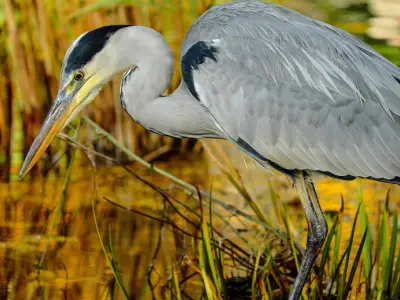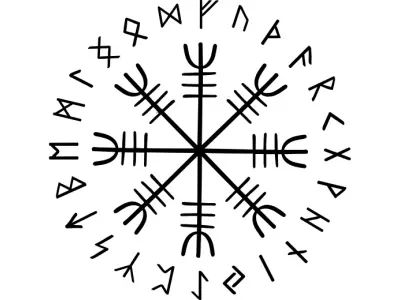When you think of a volcano you likely picture giant ash clouds, spewing lava and red hot debris lighting up the skies. But this is just the tip of the proverbial iceberg. Much of what makes a volcano a volcano lies hidden from view.
So, let’s take a deep dive inside the structure of a volcano so we can fully understand these dormant beasts lying in wait to erupt.
What Are Volcanoes & How Are They Formed?
The structure of a volcano is typically formed at the meeting point between the Earth’s tectonic plates – at the point at which they collide or move away from each other. However, there are also what are known as intraplate volcanoes. These types of volcanoes are formed away from the boundaries of the plates over what are known as “hotspots”.
Typically, volcanoes are formed at one of the following three areas:
- Divergent (constructive) plate boundaries
- Convergent (destructive) plate boundaries
- Hotspots
Divergent Plate Boundaries
Divergent plate boundaries are so-called as they describe two tectonic plates that are moving away from each other. As the plates separate (either through their own movement, through the magma pushing them apart or both – as differing opinions offer), hot magma rises to fill the void and flows onto the surface, sometimes forming a volcano.
Convergent Plate Boundaries
Working in the opposite direction to divergent plate boundaries, convergent plate boundaries describe tectonic plates that are moving towards each other, with one plate descending beneath the other as they collide, creating a subduction zone. As the plate descends it heats up and releases water, in turn slightly reducing the mantle’s melting point and forming magma that feeds up to the surface, forming a volcano.
Hotspots
Non-reliant on the movement of tectonic plates, hotspot volcanism explains the formation of volcanoes that aren’t located at plate boundaries. At these points, superheated magma, called mantle plumes, pushes through the Earth’s crust to form volcanoes. Interestingly, these points are theorised as being stationary, whilst forming lines of volcanoes as the tectonic plate above the mantle plume continues to move.
The Structure of a Volcano
To fully understand the structure of a volcano, we’ll look at the volcano parts individually, working from the outside in.
The External Structure of a Volcano
When you picture a volcano, you probably think of something that looks a lot like a fiery mountain. Indeed, the structure of a volcano is composed of crustal rocks but they can be found in many different shapes. Often these features are dome- or peak-shaped, like mountains, but they can also be found as fissures or vents in the surface of the Earth.
As magma is extruded on the surface from volcanic vents, it shapes and changes the surface features of the volcano and the surrounding area. Ash deposits can accumulate and solidify via chemical reactions with the atmosphere and surface water to create cement-like structures that are relatively rigid.
However, the largest form of deposits comes from the lava flows that can be extruded as explosive or effusive eruptions from the volcano. Effusive eruptions create lava flows that move in a fluid liquid state, and explosive eruptions eject material away from the volcano, often many kilometres up into the atmosphere.

Volcanic explosions can destroy surface structures and result in ground deformation and structural collapses. These types of eruptions can create variations in the structure of a volcano, such as calderas, cinder cones, and lava domes around the central vent. Collapsing volcanoes often leave behind a large caldera crater that can sometimes retain water deposited after the lava cools.
Lava can expand laterally across the volcanic structure as effusive materials flow from the central vent. It can also form lava tubes, a type of structure that develops after an effusive eruption when lava flowing on the outer surface cools faster than the lava on the inside. This effect creates a hardened outside surface while maintaining the molten state of the internal lava that continues to flow until the eruption stops.
Lava tubes are extremely common in effusive volcanic eruptions like the shield volcanoes that make up the Hawaiian archipelago, and many remnant structures can be explored on extinct volcanoes. So, while a volcano is similar in appearance to a typical mountain, its very nature means volcanoes are in constant flux. And the cause of this flux is what happens underneath their surfaces.

The Internal Structure of a Volcano
Now, let’s dive inside a volcano… or at least take a peak over the precipice. Much of what is visible of the structure of a volcano originates out of sight, deep in the Earth, at the mantle. Partial melting of the mantle forms the source of volcanic magma. As it rises past the Moho — named after the pioneering seismologist Andrija Mohorovičić, the Moho separates both the oceanic crust and continental crust from the underlying mantle — magma can sometimes stall and begin accumulating at the base of the lithosphere.
After some accumulation occurs, the magma will continue to rise through the lithosphere in the magma reservoir and begin to form some crystalline structures like minerals. Pressure and temperatures increase in the magma bodies, influencing gaseous forces and directing magma up through a conduit chamber.
The conduit chamber funnels magma to the surface, and this channel can also branch into smaller lava tubes and the resulting fissures that release lava directly onto volcanic slopes. Magma temperature will slightly decrease as it approaches the summit, and it will begin to rapidly cool down as it interacts with the atmosphere at the point of eruption.

The summit of the volcano is where you will find the main vent and where the initial and largest eruptions occur. The vent is directly connected to the conduit and main sources of magma and is surrounded by the volcanic crater. Volcanic craters develop after an eruption damages the summit of the mountain and ejected materials fall back and accumulate around the summit vent.
The summit can even reform if pressures inflate the caldera’s floor or future lava deposits build a new structure.
When fissures branch off the main conduit, they can create additional lava flow sites and cone features. Cones act like miniature volcanoes that have lava flows connected to the main magma reservoir and conduit channel, and their own false summit composed of settled materials away from the main vent.
Sometimes fissures branch away from the conduit but do not reach the surface, creating a sill reservoir of magma under the slope of the volcano. If there is a structural collapse, then this magma body could be released and flow down the mountain.

Why Do Volcanoes Erupt?
There are varying reasons a volcano erupts but the most common causes are when tectonic plates pull apart (at divergent plate boundaries) or one is pulled beneath the other (at convergent plate boundaries) producing a massive amount of heat and pressure, which releases water, slightly reducing the melting point of the earth’s mantle, allowing it to melt and form molten rock known as magma.
While further contributing factors can cause an eruption, the most common are:
- Magma’s liquid, rather than solid, state makes it lighter and more buoyant than the surrounding rock, allowing it to rise to the Earth’s surface.
- Gas bubbles form within viscous magma causing a build-up of pressure as it rises.
- New magma overfilling an existing magma chamber.
As the magma it collects in chambers close to the surface, it may cause an increase in pressure. Once the upward pressure of the rock within the chamber exceeds the downward pressure of that above, cracks can appear at the surface of the earth’s crust and the pressurised magma is pushed out of these and other vents, where it becomes lava.
Less common, are volcanic hotspots. These occur away from tectonic plate boundaries at zones of magmatic activity that see superheated magma rise through the earth’s mantle, melting the crust and forming a volcano from which larva runs.
The difference between the explosive eruption of a volcano and those with slow-moving, flowing larva is dependent on the magma’s viscosity. If it’s thick and sticky, the gases within cannot escape and so pressure builds, causing an explosion when the gases eventually escape, if it’s thin and runny, gases can discharge with ease and the lava will instead flow from the volcano.
Interesting Facts About Volcanoes
- The word ‘volcano’ comes from the Roman god of fire, Vulcan, as the ancient civilisation believed that volcanoes were controlled by the gods.
- There are approximately 1,500 potentially active volcanoes across the globe. Around 75% of these are in what is known as the Ring of Fire – a 25,000-mile stretch of volcanoes found at the edge of the Pacific Ocean.
- Around 20 volcanoes actively erupt on any given day. 48 volcanoes are currently being monitored as they have "continuing eruption status" – meaning they have intermittent activity with a maximum three-month break.
- Pyroclastic flows are known as one of the most deadly elements of an erupting volcano. These avalanches of solidified lava pieces, ash and toxic gases can travel at up to 450 miles per hour.
- Molten lava can range in temperature from approximately 700 to 1,200 °C.
- More than 80% of the Earth’s surface was created by volcanoes.
- Every continent has volcanoes and an active volcano resides in each, except Australia, whose last volcanic eruption was around 5,000 years ago.
Most Famous Volcanoes Around the World
With so many potentially active around the globe, it takes a lot to be considered one of the most famous volcanoes. That said, here are three that are famous for very different reasons.
Mount Vesuvius, Italy
Certainly one of Italy’s most famous volcanoes, Mount Vesuvius is known globally for destroying and burying Pompeii and Herculaneum in ash during its eruption in 79 AD – preserving the ancient Roman cities. They remained in a mostly unchanged state, almost as time capsules, until Pompeii was discovered in the 16th century and Herculaneum in 1709. The work on the towns is also said to have brought about the beginnings of archaeology. As with each of the famous volcanoes mentioned here, Vesuvius is still considered active. Though its last eruption was in 1944, this, again, saw the destruction of local towns.
Mount Fuji, Japan
If you were to draw a picture of a volcano, the next of our famous volcanoes is how it would likely appear. The perfect volcanic form, Mount Fuji has the iconic cone shape, topped with a snowy peak, which may well have been the inspiration behind Katsushika Hokusai’s infatuation with the volcano's structure. It is the artist’s collection, Thirty-six Views of Mount Fuji, which sees the mount listed as one of the most famous volcanoes, with his iconic print, "Under the Wave off Kanagawa" (also known as "the Great Wave"). Known as being possibly the most reproduced image in history.
Japan’s most popular tourist attraction, the volcano is still active but considered safe to scale, with its last eruption dating back to 1708.
Krakatoa (Krakatau), Indonesia
You know the name of this, the third of our famous volcanoes, but you may not know why. Erupting in 1883, along with being one of the most violent volcanic explosions known in recent history, killing over 36,000 people, it also emitted what has been noted as the loudest sound in recorded history – travelling from Indonesia to Australia – and the ash from the explosion drifted around the world creating amazing visual effects in the sky.
So, is this behemoth still active? Yes and no. While much of the north of the volcano’s resident island collapsed during the explosion, an eruption in 1930 saw a new cone protruding from the caldera’s centre. This cone is known as Anak Krakatau (child of Krakatau) and it has been erupting and growing ever since, with its most notable eruption occurring on December 22 2018, which saw at least 426 people killed and 40,000 displaced. Making it also one of the most infamous of our famous volcanoes, as we all remember the tragedy.
Volcanology – Why We Study Volcanoes
The unique structure of a volcano, the chemical reactions within, and the amazing geological formations that result make volcanology an area of fascination for many earth scientists.
Not to mention, understanding volcanoes can help those who share habitats with them survive and thrive in their shadows. While the natural disasters caused by volcanic eruptions can result in deadly and catastrophic damage, they have also forced the flora and fauna around them to develop unique strategies to cope with the harsh and extreme environments.
Still, the best form of defence for human populations is evacuation, as very little can stop lava in its tracks. Various techniques have been tried – such as lava walls, lava trenches, and firing cannons of seawater at lava flow – with varying degrees of success.
Most volcanologists agree that the best form of defence against volcanic events is the setting up of early warning systems to offer enough time for evacuation. For this, an understanding of how the systems of a volcano work is vital — and can mean the difference between life and death.
At the time of publishing, entering the code LEARNING in the checkout will reduce the price of our Volcanology Diploma Course to £29.





